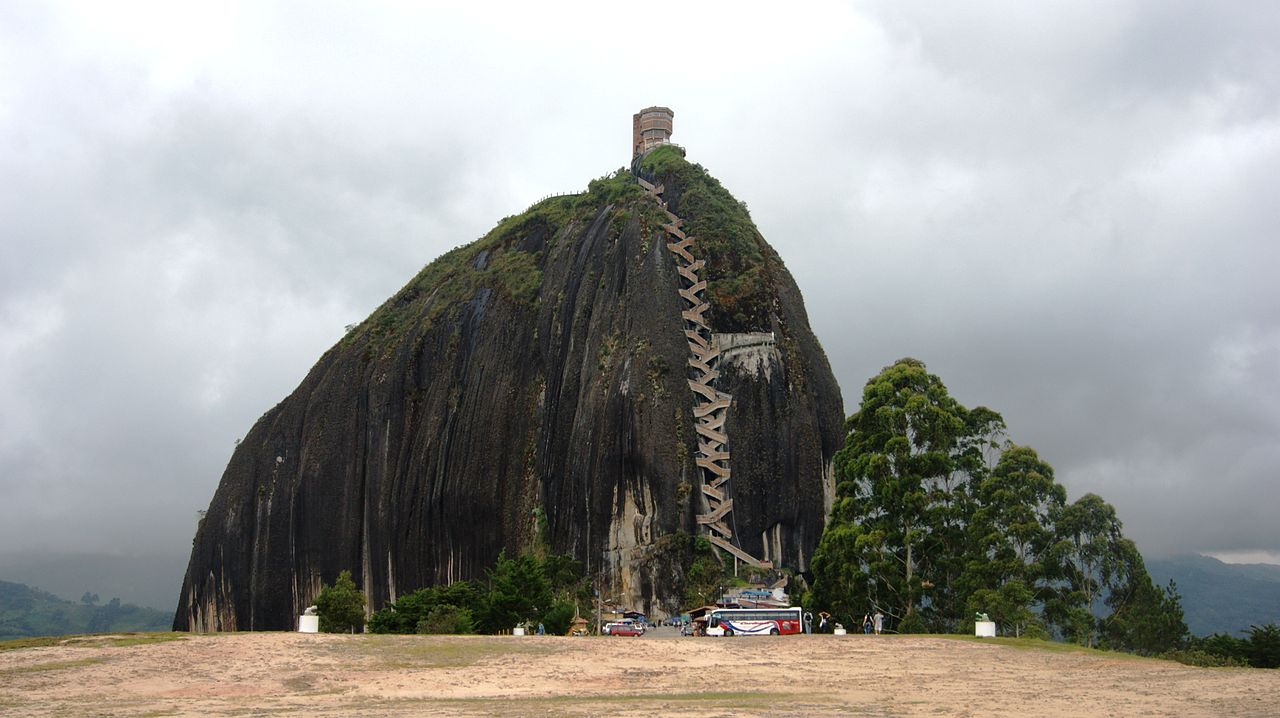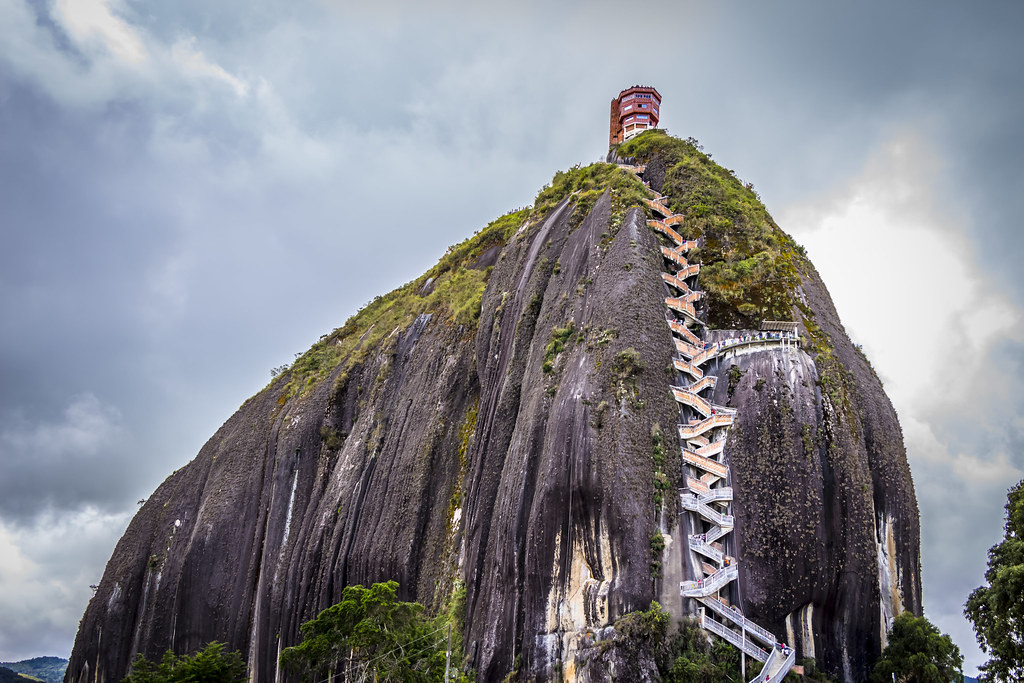The Rock of Guatape is an iconic landmark in Inselberg, also known as “The Stone of El Peñol” located on the border of two towns, Guatapé and El Peñol Antioquia, in Colombia. Hence, both towns claimed ownership of Rock Guatape.
Guatape Rock has also historically claimed the rock as its own, which has led to various names for the site. The landform is a granitic rock that has resisted weathering and erosion, probably as a result of being less fractured than the surrounding bedrock.
The town of Guatape is a major tourist attraction, particularly for travelers from Medellín, for both El Peñón de Guatapé and the famous zócalos that adorn numerous buildings.

The Guatapé is an outcrop of the Antioquia Batholith and towers up to 656 feet above its base. Tourists can scale the rock via a staircase built into one side, a path that includes more than 649 steps to the top. A number of food and market stalls are available near the base of the Rock. About halfway up the stairs, there is a shrine to the Virgin Mary. The summit contains a three-story viewpoint tower, a convenience store, and a seating area.

The indigenous South American agricultural tribe Tahamí, former inhabitants of that region, had superstitions and worshiped the rock and called it in their language mojarrá or mujará. In 1954, the rock was first climbed by three climbers Luis Villegas, Pedro Nel Ramirez, and Ramón Díaz in a five-day endeavor, using sticks embedded in the fissure on the rock. Hence, the staircase was built later on to allow people to climb the rock without needing particular equipment.

Pitcairnia heterophylla (A new species of plant) was found on the top of the rock. The beautiful viewing spot was built on top of the rock. Here, visitors can buy different handicrafts, souvenirs, postcards, and other local goods. It is possible to see the five hundred km shore-perimeter dam. There are 740 steps to the uppermost step atop the building at summit, a fact reinforced by yellow numbers also seen in the climb up the stairs. In the 1940s, the Colombian government declared it a National Monument.

According to Wikipedia On the western face of the stone there are painted large white letters “G” and an incomplete “U” (only the single vertical stroke was completed, resembling an “I”). The towns of Guatapé and El Peñol had long disputed ownership of the rock, and the residents of Guatapé decided to settle the matter by painting the town’s name on the rock in huge white letters. It did not take long for the residents of El Peñol to notice the work, and a huge mob was assembled to stop it. Only the “G” and part of the “U” were completed.
The rock rises from the bottom of the hydroelectric dam of Peñol-Guatapé. This monolith was spotted as a border landmark between country farms and the two cities of Guatapé, and El Peñol. At its highest part, on the near southeast side, it has an elevation of 7,005 ft above sea level, with an average temperature of 18 °C. The massive rock “Peñol” is 935 ft long and 360 ft wide. It has some rock breaks, one of which was used for the construction of 650 steps of the stairway that can be used to go to the top.

The Stone of Peñol is a mix of minerals such as quartz, feldspar, and mica. The view from atop of this 70-million-year-old rock is unimaginable an enormous lake full of small islets. The rock is easily visible for miles from the surrounding countryside. There are very few travelers who leave Medellin without making a visit to this pre-historic massive rock. Even today, researchers are uncertain how the rock was formed or where it has come from.
Read More – The Mysterious Stones of Pokaini Forest



Product You May Interested
- Feel Emotional Freedom! Release Stress, Heal Your Heart, Master Your Mind
- Worldwide House Sitters & Pet Sitters Directory
- 28-Day Keto Challenge
- Get Your Customs Keto Diet Plan
- A fascinating approach to wipe out anxiety disorders and cure in just weeks, to become Anxiety free, relaxed, and happy.






